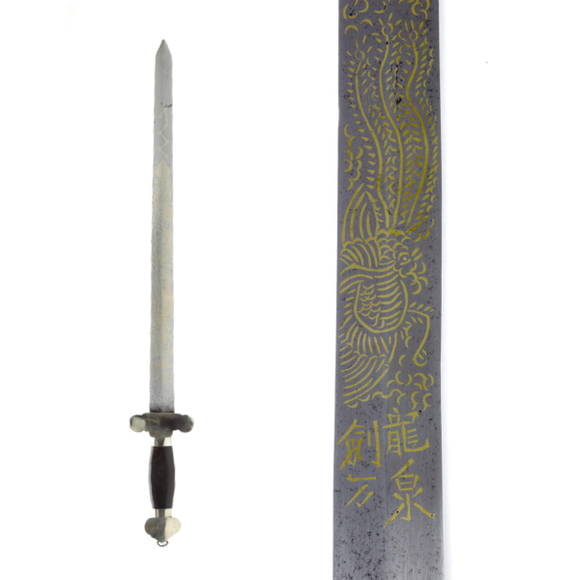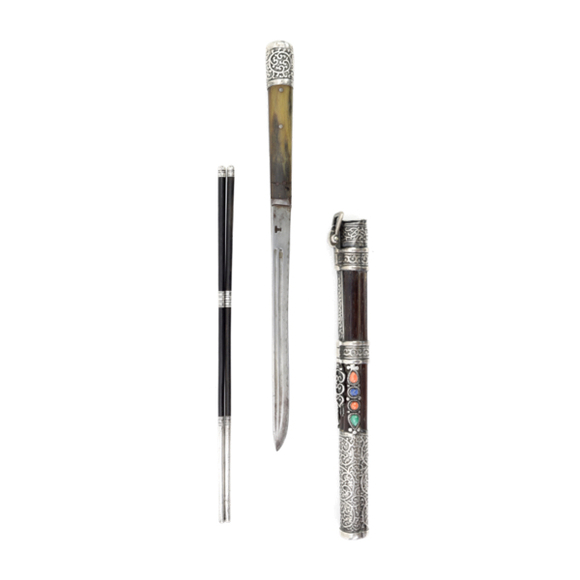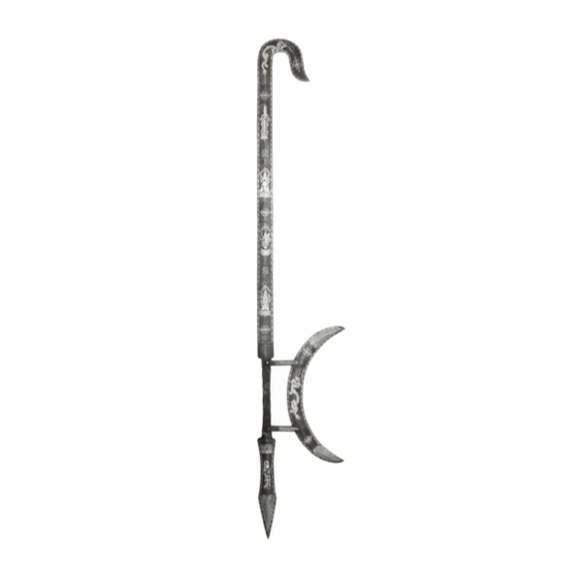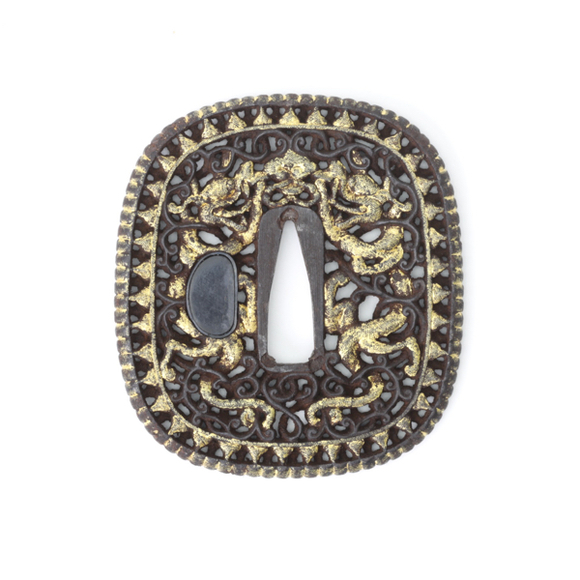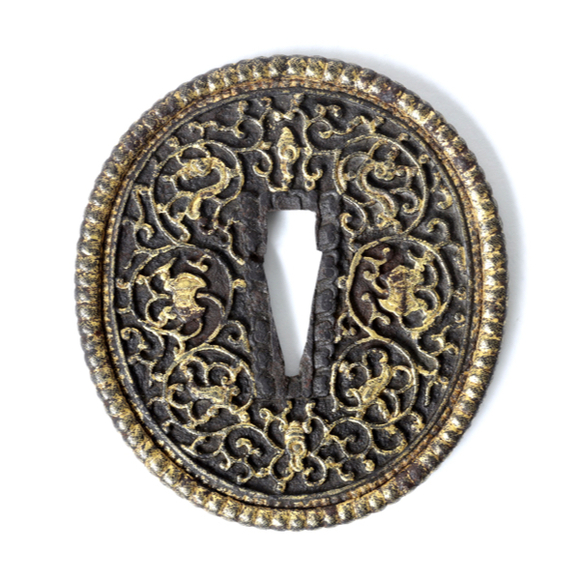A Chinese shortsword made by a well-known Longquan maker.

109 x 97 x 6.5 mm
260 grams
Iron, horn, lacquer
China
17th - 18th century
Imported from Japan
Introduction
The yìdāo (義刀) or "virtuous saber" is a large type of imperial Chinese two-handed saber. They were worn by imperial guards and the emperor himself at times.
A famous yìdāo was left by the Kangxi emperor at the Congfu Temple in present-day Hohhot after he returned from his successful campaign against Galdan. It is now in the Ningbo museum. The 1766 Huángcháo Lǐqì Túshì (皇朝禮器圖式) also lists a yìdāo which according to the text was worn by an honor guard accompanying the imperial chariot.

Regulations for the "Imperial chariot honor guard virtuous saber".
1766 woodblock edition of the Huángcháo Lǐqì Túshì.
Some yìdāo in the imperial palace in Beijing, photographed in the 1930s.
Published in "Grand View of Asia" (亚细亚大观).
This guard
An exceptionally large Chinese saber guard of a size and style that makes it attributable to use on a yìdāo. Made of a plate of forged iron that was pierced and chiseled. There are recesses on either side that are shaped in a way that is often seen on bezels that hold semi-precious stones on Qing sword furniture, and it appears that this guard also once held precious stones. These stones were restricted to princely ranks and higher unless the emperor explicitly granted the right to wear them.
The whole would have originally been covered by gold overlay, now gone.

Japanese use
Judging from the amount of high quality Ming and Qing dynasty mounts that turn up in Japan, it seems that imported Chinese gurds were quite popular among some samurai and other Japanese sword bearers.
The guard must have also made it to Japan at some point in time and was probably mounted on a large katana or odachi. The side that sits against the hilt has a trapezoid shaped recess, made to accept the typical Chinese ferrule of that shape that was popular in the 17th to 18th centuries. Japanese swords having oval grip, they added a piece of lacquered horn to fill the gap and ensure a good fit on a Japanese hilt.
Luckily they did not add the hitsu-ana that often deface imported guards from China.
Conclusion
A very rare example of a Chinese yìdāo guard that was exported to Japan and survived there.




Typical Chinese hook sword, with seldom-seen fine silver wire overlay.
With the swirling arabesque motifs that are typical for this period.


